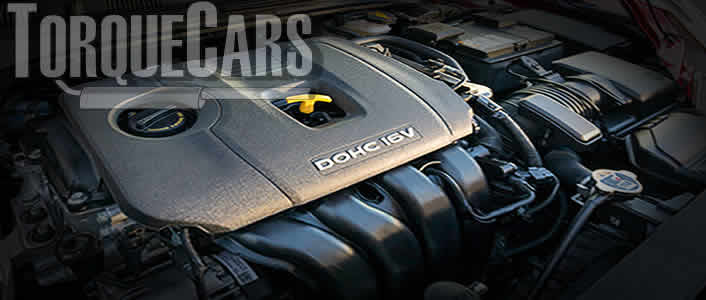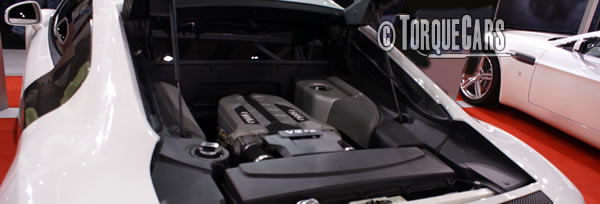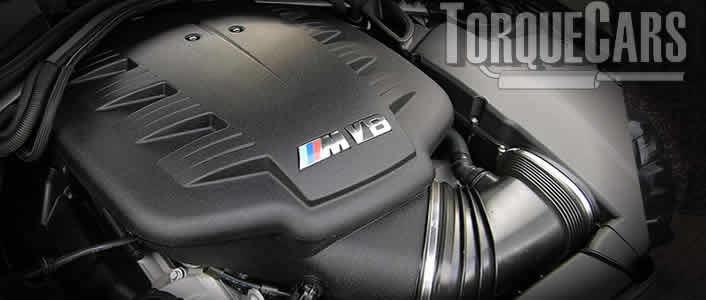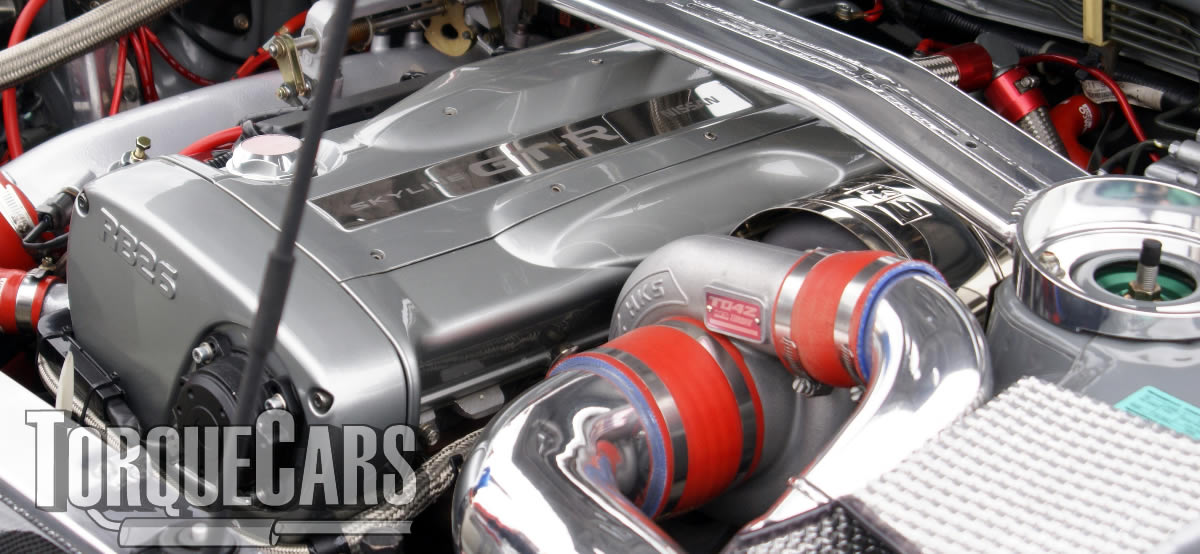How to properly tune up your engine
"In tune, perfect harmony."
Our indepth guide covers car engine tuning for all popular types of engine. We also answer what exactly we mean by engine tuning.
First up we have to accept that there are many different types of engines. (from engine configuration to fuel delivery and engine design there is an almost endless array of engines.)

So that said we will provide generic theory in this article on how to tune a car which should give a good starting point with whatever engine you have.
If you need more specific advice you sign up to our car forums where our helpful and friendly members will assist you further.
For many "a tuned car" is simply one running at peak efficiency and they would achieve this by a full service and adjustment to factory specifications.
Their aim is for smooth running and maximising fuel economy.
For others (and most of our readers) the aim is to get the car running and performing better than originally intended.
Due to the conservative settings/parts used by manufacturers and low cost production methods and techniques there are plenty of opportunities to improve your engine.
What is a tune up then?
Most of TorqueCars members are interested in maximizing the performance of their cars. But these methods can also be used to maximize economy by pushing the engine into it's most efficient range.
Your first step is to ensure that the engine is running as it was intended.
A highly tuned engine will often highlight weakspots or problems that were not evident thanks to the soft/standard factory setup.
Change the oil and filter, fit new spark plugs and perform a full service if the leads are old they will also need replacing.
Get the engine compression tested and rectify any major issues like worn piston rings and broken or worn valves. (Checking the valve clearance is also a very good idea as this can lose a fair bit of power.)
So we'll take the rest of this guide and apply it to popular engine configurations.

How to tune a Carburettor engine
These typically rely on a breaker to distribute the spark with a crude mechanical advance as the RPM rises.
By timing the spark to occur a fraction earlier you can extract a more complete burn cycle and more efficiently convert the fuel and air mix into power.
Too much advance is a bad thing as the engine will start to knock.

Generally speaking a trial and error approach can often be used, if you gradually turn up the advance until the engine starts knocking and then back it off a bit you will have a good setup.
Getting the right timing and spark duration will help improve power and economy as the engine is running more efficiently.
Using a strobe light connected to the spark plug pulse you can effectively freeze the engine and see the timing mark.
The timing mark is located at the bottom of the cambelt on the pulley, there is typically a small groove and a little notch marked on the engine.
If you mark the groove and white notch with some white paint it will show up when the strobe light hits it. This will enable you to better adjust the engine timing.
By rotating the distributor housing you can adjust the timing by advancing it or retarding it.
Adjustment should be done gradually and the engine will need to be tested under load at the full rpm range. A rolling road dynometer is the best environment for this as you can make adjustments live.
If you want to increase the fuel to match the intake air you will need to a larger jet (some wrongly refer to jets as needles!).
Carb setup can be a real art and if you have twin carbs then the job gets even harder. Most carbs come with the correct jet sizes and you should only uprate them if you want to make dramatic alterations to the engine and increase the intake air charge significantly.
The key is matching the fuel to air delivery and with modern fuel injection engines this is becoming a dying art.
How to tune a fuel injection engine
Fuel injected engines are much more sophisticated, both the amount of fuel and the timing of the spark is delivered and is adjusted.
The old mechanical spark distribution was far from ideal and meant that most of the time the engine was not running at peak efficiency.
Spark timing needs to vary a lot more than a simple linear curve will allow. So to address this issue we now have a computer in our cars that stores a fuel and timing map across varying loads and intake conditions to provide optimum running.

Most modern engines operate on a closed loop which basically means that the parameters for the next combustion cycle are set by the previous one.
The exhaust is sniffed for oxygen to determine if the car is running rich or lean and the intake fuelling is adjusted to match.
Many popular engines learn over time the optimum settings and every 200 miles or so adjust the ideal map to keep the engine running efficiently.
This takes into account driving style, seasonal temperature adjustments and varying grades of fuel.
As the fuel delivery and timing map is stored and controlled on computer there is little a home tuner can do other than replace the chip or add a piggy back device. (See ECU tuning.)
On a naturally aspirated engine you can probably wring another 10% power out of the engine by tightening up the fuel delivery and timing maps. Manufacturers tend to set the engine conservatively.
How to tune a turbo engine.
The points about fuel delivery and timing the spark are just as essential in a turbo engine.
All of the above point apply to turbo engines but the gains are much more noticeable due to the effect of the turbo.
As the turbo is pushing more air into the engine and is making more power you have a lot more to gain.

The turbo is the heart of the engine so we also need to pay attention to this. Matching the exhaust and intake compression impellers to your air needs can make dramatic alterations to the power band.
You can hybridize the turbo using a stock OEM turbo casing and uprating the internals.
Another option is to fit a second turbo or just replace the existing turbo with a larger unit.
It all depends what your power requirements are. See our turbo tuning articles to get more of an idea on what is involved in a tuned turbo engine.
Pre 2000 engines are typically very hard to tune/remap so you are stuck with piggy back devices or a risky chip change.
After 2000 most cars came with OBDII ports or similar and these allow a relatively easy way to upload and reflash the cars computer.
On a modern turbo engine the computer will typically control the boost and waste gate in addition to the fuelling and timing so you have much more scope for power gains.
A modern turbo engine can often make a power gain of 40% quite easily on stock parts with a simple remap.
Other ways to tune an engine.
Further modifications and links to more information on them.
Once you know about the characteristics of timing it is worth looking at the many other options and seeing what extra mods can be done to your cars engine.
We have mainly looked at timing so far. There are a large number of other modifications you can do to an engine to increase it's state of tune.
Balancing your engine allows an engine to run at higher RPM, adding a sports camshaft will further raise the power band and alter the timing and duration of the engines induction, compression, bang and exhaust cycles.
Moving the air through the engine faster is also a priority and a set of performance headers a sports exhaust, sport catalyst and some head work such as porting and polishing will further increase the power band.
If you have a turbo then you also have some additional options open to you. An intercooler will reduce the intake air temperature and allow bigger power gains.
You could also uprate your turbo by fitting a larger turbo, a twin scroll turbo or get your existing turbo hybridized with uprated internals. Wastegate and blow off control can also be altered to increase the power produced by the engine.
Diesel engine tuning is covered in this diesel tuning article.
There are also Rotary engines and various 2 stroke engine configurations, and how to tune these are covered in our modified car forum.
We are always adding to our sites articles and keeping them updated, so be sure to check back.
Please Check out my YouTube channel, we're regularly adding new content...
PLEASE HELP: I NEED YOUR DONATIONS TO COVER THE COSTS OF RUNNING THIS SITE AND KEEP IT RUNNING. I do not charge you to access this website and it saves most TorqueCars readers $100's each year - but we are NON PROFIT and not even covering our costs. To keep us running PLEASE Donate here
If you liked this page please share it with your friends, drop a link to it in your favourite forum or use the bookmarking options to save it to your social media profile.
Feedback - What do You Think?
Please use our forums if you wish to ask a tuning question, and please note we do not sell parts or services, we are just an online magazine.
Help us improve, leave a suggestion or tip
Please watch this video and subscribe to my YouTube channel.
2 Responses to “Tuning a car engine”

 Click to accept YouTube Cookies & Play.
Click to accept YouTube Cookies & Play.
I am a retired ASE mechanic and emergency vehicle fleet manager who built street rods also. Using a vacuum gauge and dwell meter when adjusting a carb is by far the best way to tune older engines. At 71 I have adjusted my share of 1, 2 and 4 barrel carbs and in multiples. Two 4’s can be a brain-drain! Don’t forget the vacuum gauge to balance everything out. Old man…old tricks!
I forgot, for those who never used one, vacuum gauges(test equipment type) usually come with notes explaining how to hookup and read.